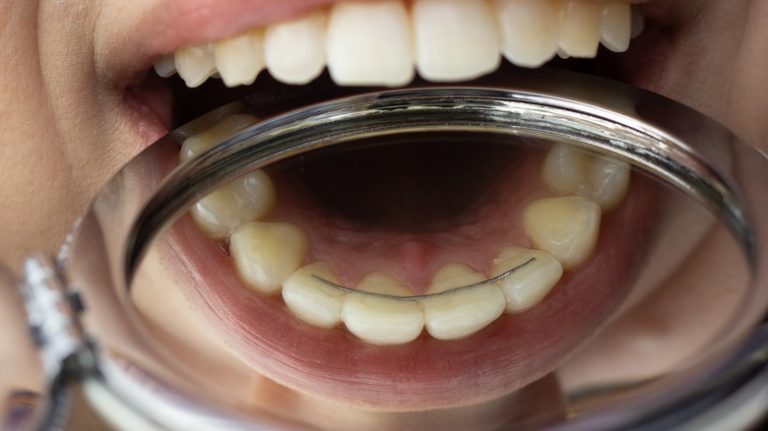When it comes to being a teenager (or even an adult), having braces is almost a right of passage. Many people wear braces for one or more years to help fix the misalignment of teeth. It’s estimated that at any one time, 4 million Americans are wearing braces (25% of them being adults), according to Humana. However, over the last few years, aligners have become a popular alternative to traditional braces.
Instead of metal wires pulling your teeth into alignment, aligners are clear plastic molds of your teeth that gently reposition your teeth over time. Unlike braces, which are permanent until the teeth are repositioned, aligners get replaced every week or two as the teeth move and new molds are made, explains the American Association of Orthodontists. However, you won’t escape wearing a retainer with aligners; one still needs to be worn after your teeth are done moving.
Whether you receive braces or aligners, you may be wondering which one is more hygienic for your mouth.
Braces can increase risk of tooth decay

As might be expected, having braces in your mouth means you won’t be able to eat the same foods you might have before. Foods you shouldn’t be eating with braces include popcorn, pretzels, chips, gum, hard candy, pizza crust, and ice, among others, explains Healthline. These foods can get stuck in the metal wiring and even damage the braces. Breakages can prolong your treatment and cost more money as emergency visits to the orthodontist are needed.
If you get certain foods stuck in the metal wiring, it can also be difficult to clean and remove the food. This can speed up the process of gingivitis. Having traditional braces on your teeth actually increases your risk of tooth decay and gingivitis,” said J.L. Weber, DDS, speaking with WebMD. Of course, if you follow the instructions of your dentist by avoiding the specified foods and following good oral hygiene, your chances of tooth decay will decrease dramatically.
Aligners are removable which can make cleaning easier

Unlike braces that are permanently on your teeth until removed by an orthodontist, clear aligners are removable trays that fit over your teeth. Since they can be removed, you don’t have to change your usual diet to accommodate them and you can more easily brush and floss your teeth, explains WebMD. Braces are a little more tricky to clean perfectly which can cause an increase in bacteria.
Cleaning aligners themselves is also very simple. Aligners can be rinsed with water every night and then cleaned with liquid soap and warm water as needed to help destroy bacteria. Some aligners even come with a special tray that allows you to soak your aligner in an antiseptic cleaning solution for a deeper clean, according to Healthline. And yes, even though you replace your aligner every week or two, it’s still best practice to clean them regularly as failing to do so can create bad breath and leave your teeth exposed to bacteria.



